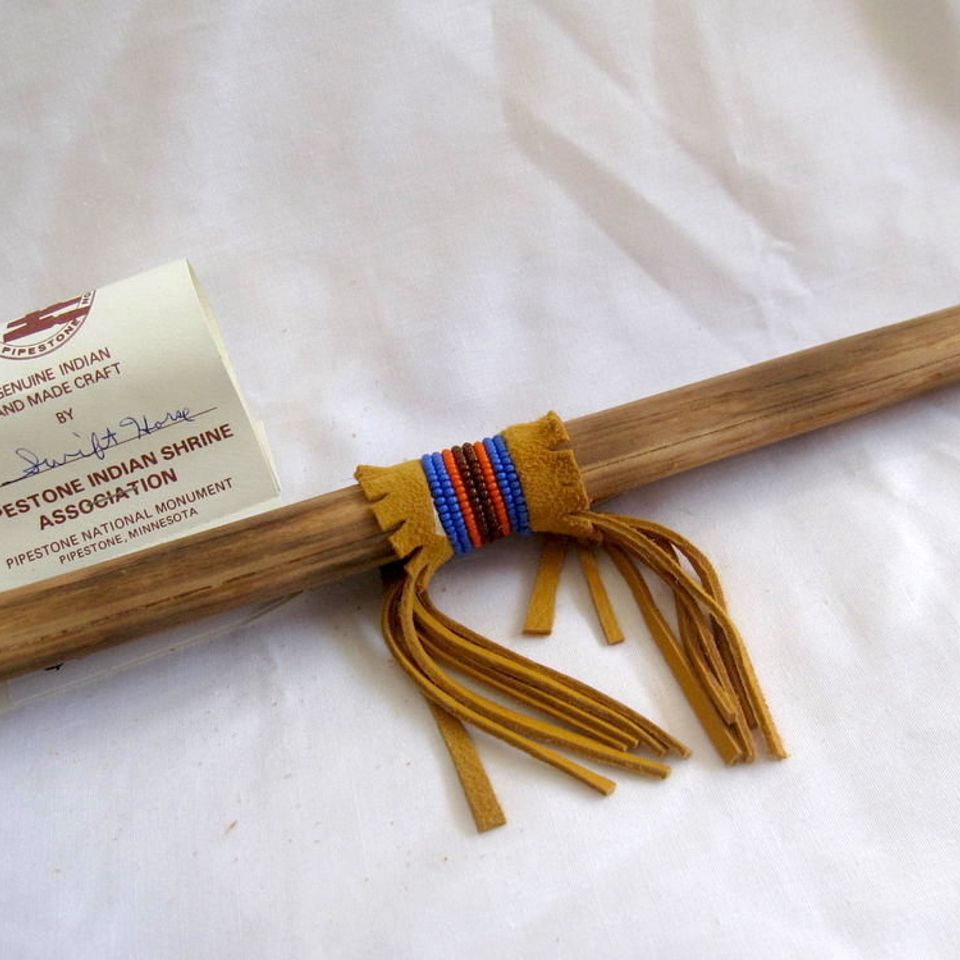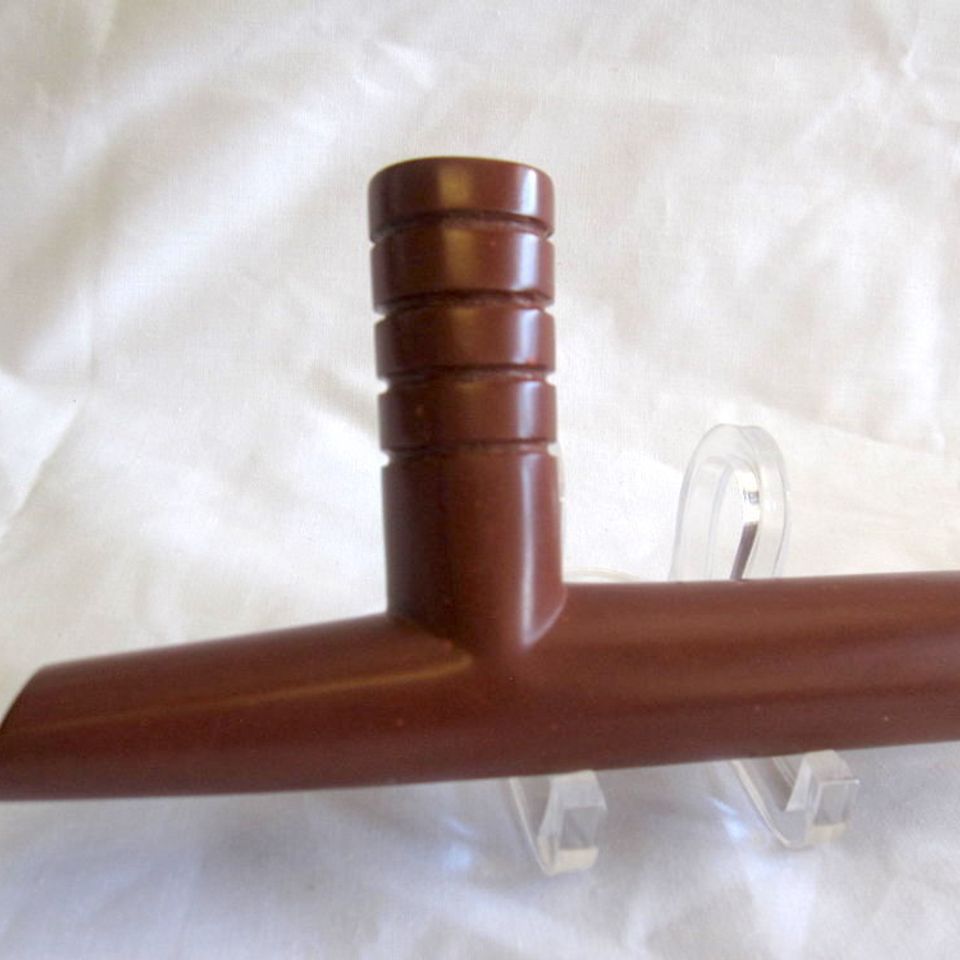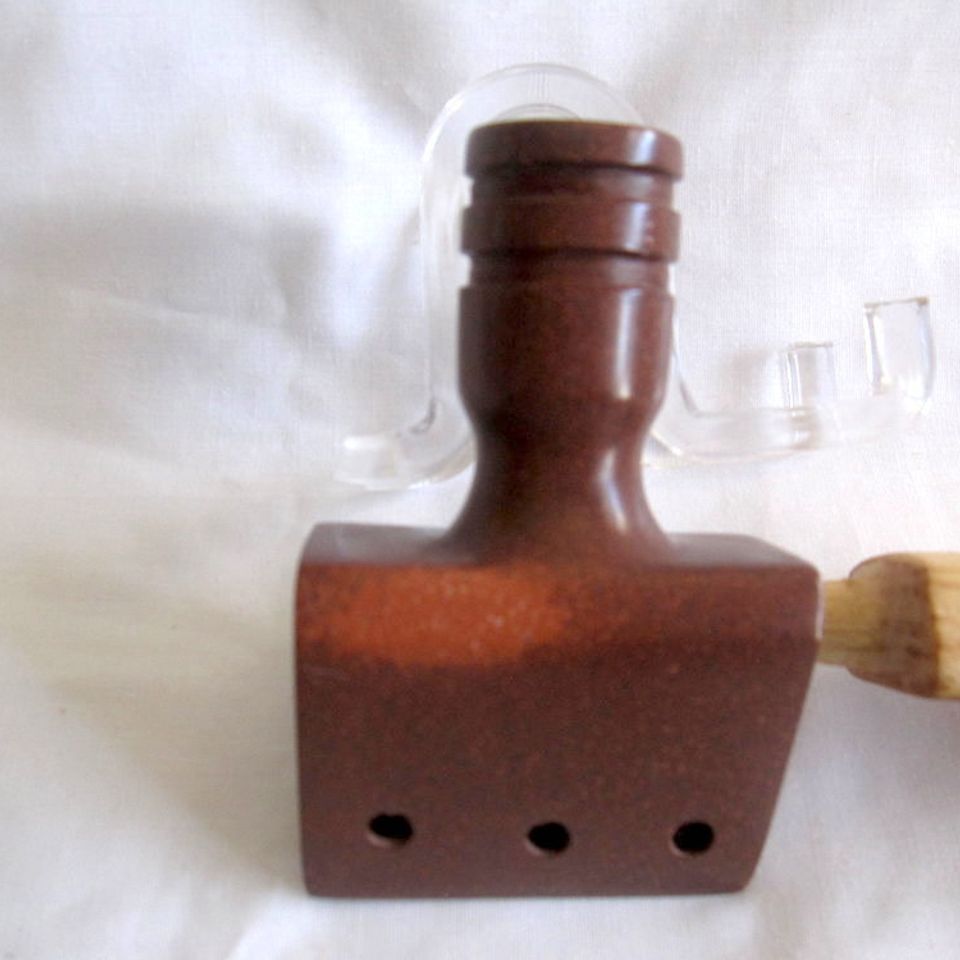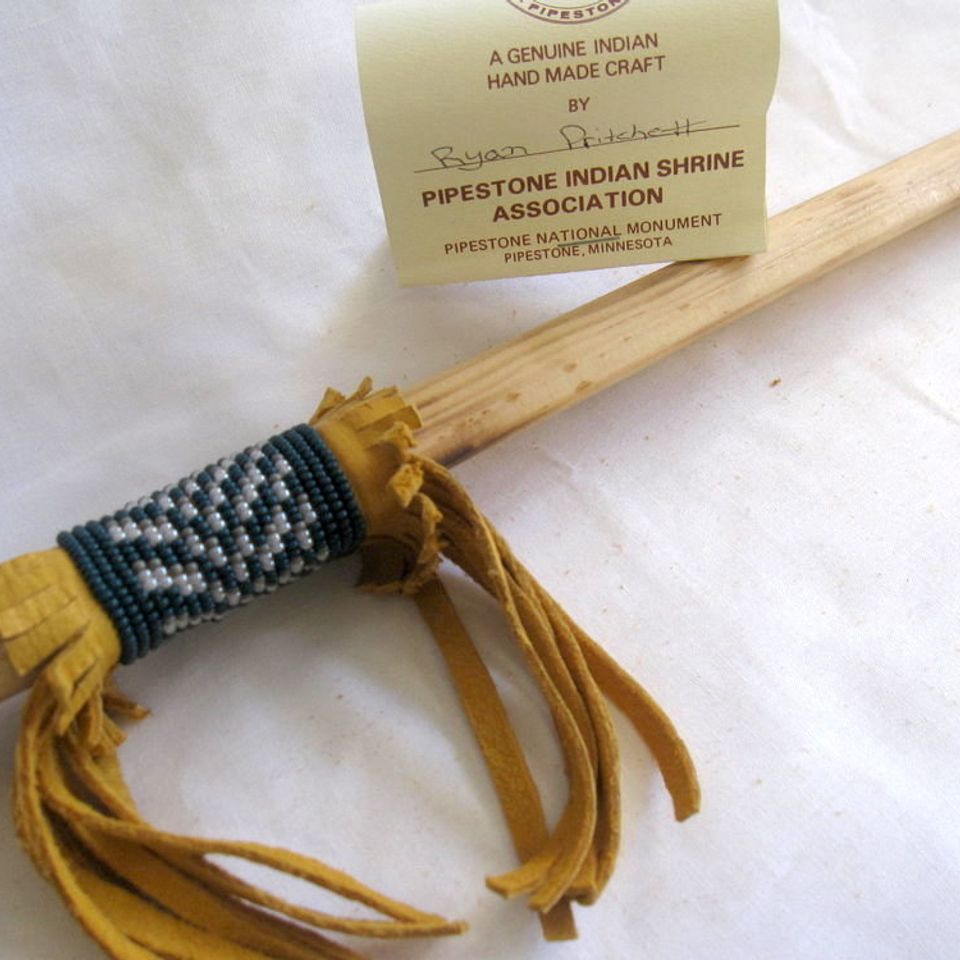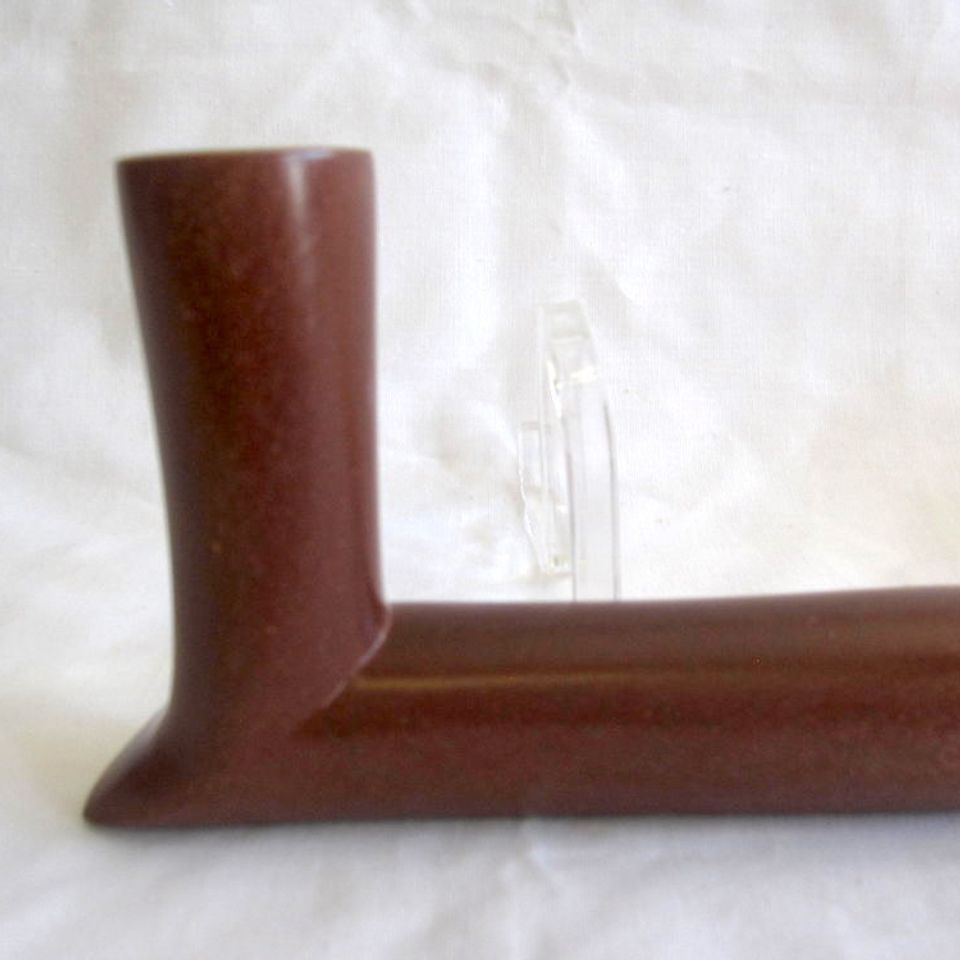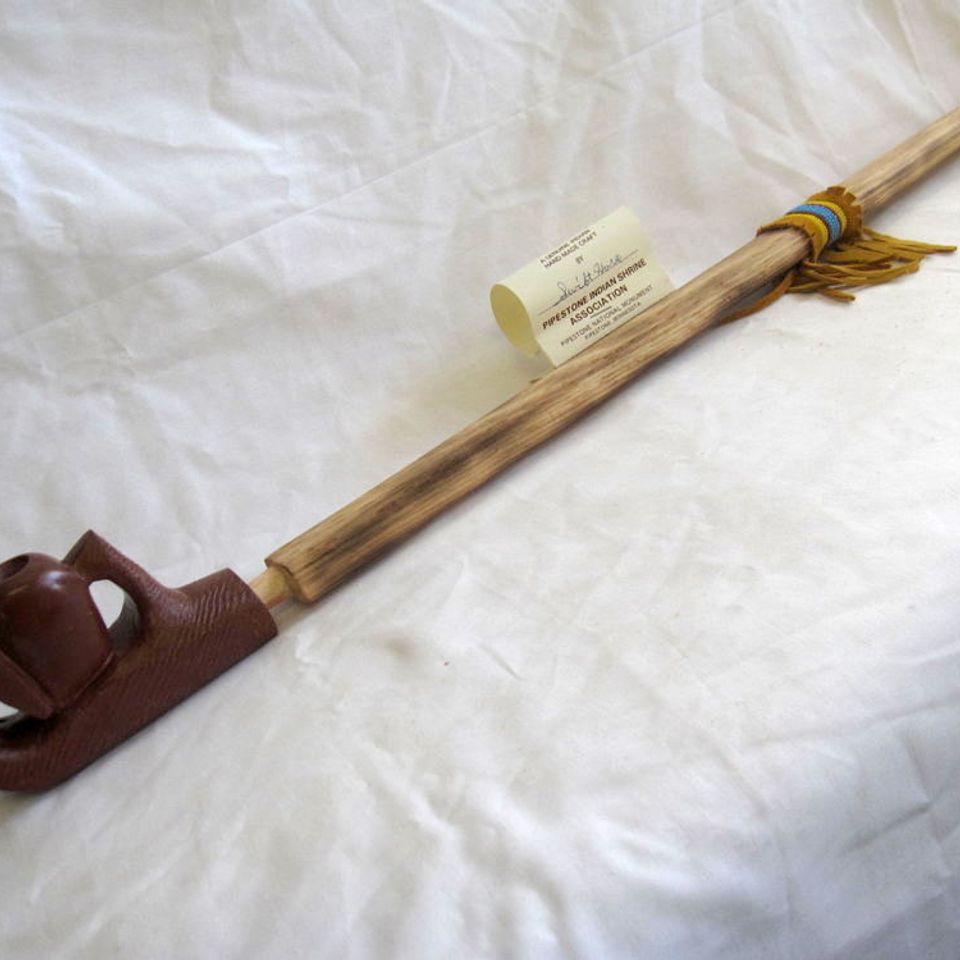Plains Pipes
These pipes represent the most common style of pipe in use throughout the period of white contact. This style of pipe was not limited to one group or tribe, but was in general use from the western Ohio Valley to the Rockies and from the Arkansas River to the plains of southern Canada. Large numbers of plains pipes came directly into white hands from the Indians during that widely publicized period in our history, marked by the Indian wars and treaties. Because the Indian ceremonial pipe was frequently used to bind a treaty, it became widely known as the "peace pipe".



